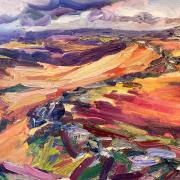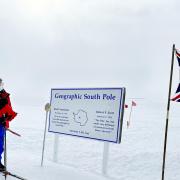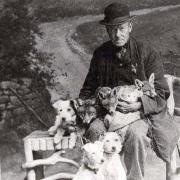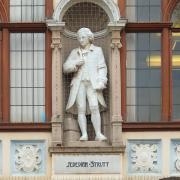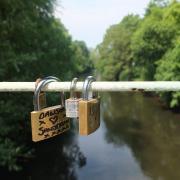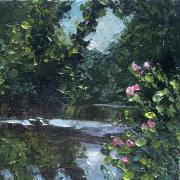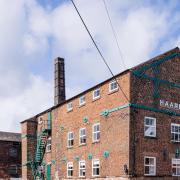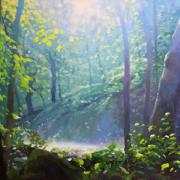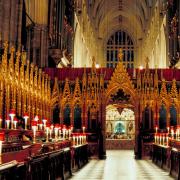Peter Seddon on Bretby and the ‘Golden Pharaoh’

Running in London throughout December until May 2020 the much-lauded exhibition 'Tutankhamun - Treasures of the Golden Pharaoh' will attract huge visitor numbers. It will display more artefacts associated with 'King Tut' than ever before - part of an international tour ending in Cairo in 2022 to mark the centenary of the 1922 discovery of Tutankhamun's amazing tomb and treasures.
Even in our 'advancing' world, the monuments and artefacts of Ancient Egypt continue to fascinate. Far from being dead, the past appears more alive than ever. Technology offers fresh insights. History and heritage are 'on trend'.
Egypt may be far distant from Derbyshire, but the tendrils of connectivity run deep. The county actually has an indelible link with the great discovery. Indeed it could be mooted that without 'Derbyshire money' the young Pharaoh might never have been found at all.
On 4th November 1922, in the Valley of the Kings near Luxor in Egypt, the archaeologist Howard Carter (1874-1939), after years of searching, uncovered the first of a flight of steps leading to the entrance to the 3,200-year-old tomb of young Pharaoh King Tutankhamun (c.1342-1325 BC).

Carter had been financed for 15 years by the wealthy aristocrat Lord Carnarvon (1866-1923) - George Edward Stanhope Molyneux Herbert, 5th Earl of Carnarvon. His birthplace and family seat was Highclere Castle in Hampshire - still the Carnarvon home and now 'better known' as fictional Downton Abbey!
Carnarvon was summoned by Carter to witness the tomb's opening - peeping first through a small hole Carter exclaimed that he saw 'beautiful things'. The subsequent excavation revealed thousands of items in all their glory - but the painstaking progress lasted a number of years. Only in October 1925 did Carter finish opening the series of coffins that revealed a magnificent golden face mask and the mummified body of Tutankhamun.
That was the crowning glory. But by then the so-called 'Tutmania' had already gripped Britain. Egyptian influence was seen in countless aspects of British culture - fashion, architecture, literature, art, music, cuisine, theatre and cinema - none were spared. Even cocktails were given the Egyptian twist - and no fancy dress ball was complete without a bandage-wrapped 'mummy' and at least one glamorous Cleopatra.
Lord Carnarvon lived to witness the beginning of this Egyptomania - but never saw Tutankhamun's mummy unveiled. He died in Cairo on 5th April 1923 just five months after the discovery of the tomb. The cause was complications arising from a mosquito bite - but the sensationalist press lost no time in declaring that the 'Curse of the Mummy's Tomb' had wreaked its vengeance.

Despite the serious archaeological significance of Carter and Carnarvon's triumph, much surrounding their discovery was thus sensationalised. So much so that the practical elements of conducting an archaeological expedition were underplayed - permissions, wages, conservation, politics, and most of all finance.
The stark reality was that digging for treasures season upon season - often with scant findings - was an extremely costly business, and at times demoralising. Lord Carnarvon had immense inherited wealth - but his lavish lifestyle and the running of Highclere consumed huge sums. And his pockets were not bottomless.
He began financing Carter in 1907. But only in 1914 did they acquire the concession to dig in the Valley of the Kings - by then a great deal of money had been spent. Both men believed that Tutankhamun's tomb was 'out there' - but how long could they sensibly keep searching? For Carnarvon this was after all something of an indulgent hobby.
What Carnarvon needed to justify his continued quest - not least to himself - was the release of an extra pot of 'ring-fenced' cash outside his already burdensome day-to-day finances. That 'digging fund' was realised - or at least made more palatable - by the sale of another part of his landed portfolio. This much-needed 'Tut money' came from the sale of Bretby Hall and the Bretby Park estate in South Derbyshire.

There's our link - a very significant one. Carnarvon - at the time styled Lord Porchester - had inherited Bretby Hall and its estates in 1885. He visited intermittently for sporting pursuits - November shooting parties were something of a ritual - but never lived there permanently. He resided at Highclere and wintered in warmer climes for his delicate health. That satisfied his needs.
By 1910, already three years into his financing of Carter, he decided Bretby could go.
But initially only fragments of the estate were successfully sold, and when Bretby Hall was put up for auction in Burton in 1911 it failed to reach its reserve.
Only in 1915 - with his resources further depleted - did Carnarvon manage to dispose of the hall and estate. The buyer was Swadlincote industrialist John Downing Wragg - a son in the Thomas Wragg empire known for making sewerage pipes and sanitary wares.
The pot was further enhanced by the sale in 1918 of many of the valuable contents of Bretby Hall. The timing of these 1915 and 1918 sales is pertinent - for the First World War saw excavations in the Valley of the Kings suspended until 1917. That gave Carnarvon breathing space - but even so, by early 1922, the prized find still eluding him, Carnarvon hinted to Carter that the 1921-22 winter digging season closing in February would be his last.
In the event Carter persuaded him to finance 'one last season' - that beginning in November 1922 which yielded the tomb. Thereafter, despite Carnarvon's untimely death, the project 'had to' continue - financed by the widowed Lady Carnarvon. Not until 1932 did Howard Carter declare his work finished.
Logic suggests that without the sale of Bretby Hall and estate Carnarvon might well have pulled the plug prior to the great discovery. So let's hear it for J D Wragg - amongst other things it was money made from Swad lavatory pan sales that enabled the world to gaze in wonder upon the treasures of Tutankhamun.
South Derbyshire also had a more tangible link to the excavations. In 1910 Carnarvon built Carter a house near the Valley of the Kings. Dubbed 'Castle Carter' it incorporated bricks manufactured on Bretby Estate land near Newhall - shipped to Egypt and each stamped with the Bretby name. Castle Carter is now a tourist attraction - an unlikely link to Derbyshire in the Land of the Pharaohs.
Bretby Hall also became associated with the curse conspiracy surrounding Carnarvon's death. Close to the hall stood an ancient Cedar of Lebanon planted in 1676 from an imported seed - considered the oldest cedar in Britain. A legend arose that if a branch fell from it a member of the Carnarvon family would die. Several such 'coincidences' had already occurred - and shortly prior to Lord Carnarvon's tragic demise a central branch of the so-called 'Tree of Death' detached itself.
The press seized upon this spooky happening - and ghoulish sightseers made pilgrimages to Bretby to check the evidence. This monumental tree eventually died and was felled in 1954. Near where it stood is now the Private Nursing Home 'Cedar Court' and the residential development 'Carnarvon Court'.
Grade II listed Bretby Hall still stands. After J D Wragg died in 1917 it was sold in 1919 to Derbyshire County Council. It was first a sanatorium for tuberculosis sufferers and later an Orthopaedic Hospital. After that closed in 1997 it was converted to luxury apartments. A number of plaques mark Bretby Hall's fascinating history.
A fringe effect of Egyptomania was that all manner of stories with an Egyptian twist tended to be resurrected. A curious Derbyshire one concerned the Ashbourne solicitor John Bamford - a collector of antiquities. In 1887 he bought an Egyptian mummy at auction. When his wife refused to give it house-room he buried it in a corner of Fenny Bentley churchyard, where it presumably remains. No unauthorised digging please - beware the curse.
Even Derby County got in on the act when in 1920 they signed Cairo-born forward Tewfik Abdallah. Overseas players were then a rare breed in the Football League and 'Toothpick' - as the fans dubbed him - became quite a favourite.
Two Egyptian mummies long-held by Derby Museum also garnered increased attention. Dating from 650 BC and 250 BC they are still on display today and well worth seeing - an embodiment of Ancient Egypt at the heart of Derby.
The prize for the most oblique Egyptian angle goes to the Derbyshire Times - a tale worth repeating. It told of a genuine surviving bill from c.1846 written by an innkeeper living near Buxton. It said: 'Aos afada' - 1s 6d. 'A' - 0s 3d. 'Atakinonimomagen' - 0s 6d.
A wide-eyed journalist who later acquired the mysterious bill mused that the cryptic words preceding the prices 'were perhaps Egyptian' - until a Derbyshire native sagely enlightened him.
The innkeeper had merely spelt as he spoke: 'A Horse half a day' (stabling), 'Hay', and 'A taking of him home again'. Another 'Egyptian mystery' solved!
That's Derbyshire's version of 'four candles' - a 'cracker joke' reminder that it is that time of year again. May your Christmas dinner be free from curses and your tree not shed a branch - 'Seasons Greetings' to one and all.






